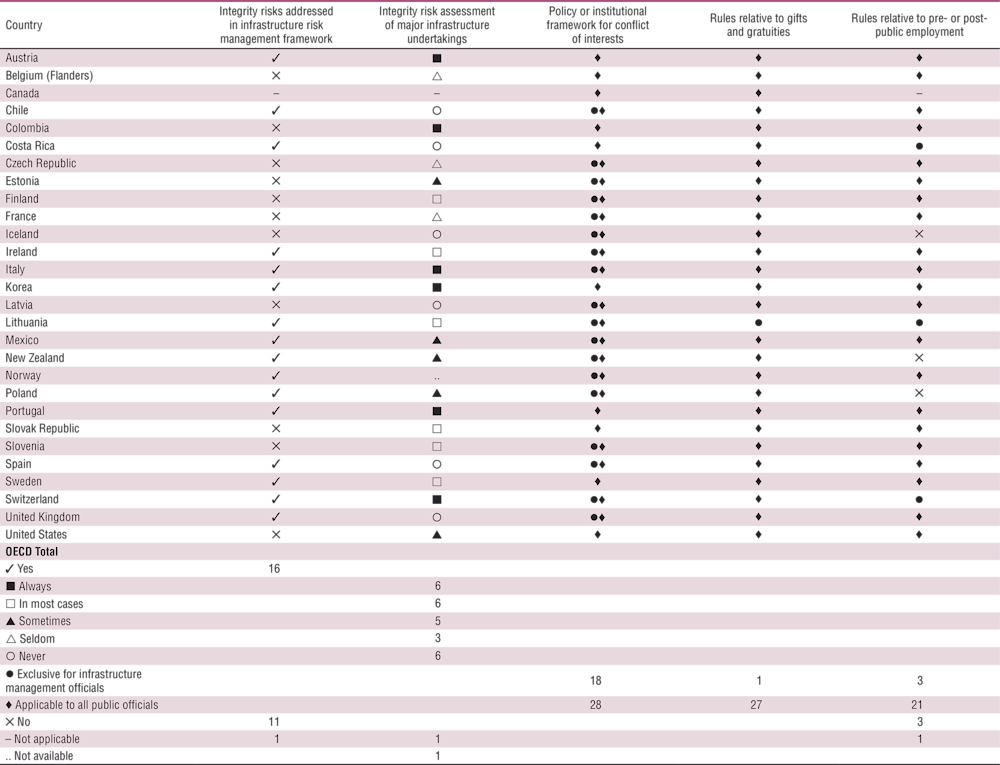Integrity risks can arise at every stage of the infrastructure life cycle, resulting in inappropriate use of resources or improper behaviour. During crises, when rapid responses are needed and some safeguards lifted, these risks may increase and require adequate firewalls. OECD recommendations on the governance of infrastructure and on public integrity (OECD, 2020, 2017) highlight the adoption of a risk-based approach to identify, mitigate, and address integrity risks such as fraud, collusion, corruption, undue influence or other unethical practices at each stage of the infrastructure life cycle and develop tailored control mechanisms.
The OECD Infrastructure Governance Indicator (IGI) on integrity provides an overview of where OECD countries stand in five sub-pillars of management of integrity risks in infrastructure governance: risk-based approaches, internal and external control, management of conflict of interest and integrity risks and enforcement mechanisms. The indicator does not measure the effectiveness or quality of implementation of these elements. With an average of 0.69, country scores range from 0.29 to 0.88 (Figure 8.5). On average, countries scored lower on risk-based approach (0.59) and conflict of interest management (0.51) than the other sub-pillars of the index.
Infrastructure management has a high risk of integrity failures due to the large sums involved, the complexity of the transactions, – especially those requiring complex financial schemes such as public-private partnerships or concessions and procurement methods – and the multiplicity of stakeholders. Precisely targeting such risks may require tailored policies and tools, consistently implemented and aligned to a whole-of-government approach to integrity. Currently, only 59% of OECD countries with data available (16 out of 27) explicitly address public integrity threats in their infrastructure risk management frameworks. Even fewer countries (12 out of 26 or 46%) assess public integrity risks for all or at least for major infrastructure projects, at a minimum identifying the specific types of relevant integrity breaches, the actors likely to be involved, as well as the expected likelihood and impact if a risk materialises (Table 8.6).
Across OECD countries, management of conflict of interest in infrastructure projects is often part of a wider framework for all public officials. However, 64% of OECD countries (18 out of 28) have a conflict of interest policy or institutional framework exclusively for infrastructure management officials. Such frameworks may include specific guidelines, case studies or practical manuals to apply rules and policies to the activities involved throughout the infrastructure cycle and are aimed at preventing and managing conflict of interest during project assessment and selection, tendering and award, contract management, and evaluation and audit. Only Lithuania has a conflict-of-interest framework exclusively for infrastructure management officials covering gifts and gratuities, and only in Costa Rica, Lithuania and Switzerland do these frameworks cover their pre- or post-public employment (Table 8.6). There is room to increase the provision of illustrations and guidelines on how integrity risk assessments and conflict-of-interest policies could be applied to the management of infrastructure.


